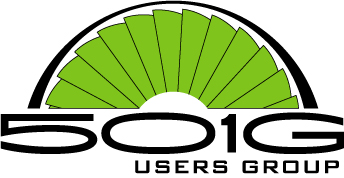
- Challenges getting into the market because of high gas prices.
- Two big outage events: Row 1 blade failure and generator lead failure, the latter attributed to misalignment of the lead from the generator to the isophase bus.
- L-1 steam-turbine blade failure (generator drive end) damaged the L-0 row and tubes in the condenser impingement zone. Analysis revealed stress corrosion cracking as the cause. Opened the HP/IP turbine while the LP blades were being replaced and found some problems there as well. The distribution grid, located just ahead of the reheater in one of the HRSGs, also failed, damaging some tubes. Temporary repairs made; permanent repairs deferred a couple of months to accommodate the addition of necessary structural support.
- At a 2 × 1 plant with about 50k hours of operation on the GTs and steamer, and 1000 starts on each gas turbine and about 650 on the steamer, addressed an exhaust-casing split-line leak on one GT. Recommended fix was casing-bolt replacement at 110% of the recommended torque. Trunnion vibration issues on a 501G were solved by regreasing. Plant’s greasing process then was updated to reflect lessons learned. Similar problem on another unit in the fleet was corrected by replacing the grease fittings. The originals were worn out and grease was not getting to where it was needed. Yet another user, similarly affected, reported that his plant’s solution was to jack up the unit and remove old hard grease.
- Combined cycle with just over 100k hours on both GTs and the steamer reported that the NextGen upgrade done a couple of years ago to permit operation at lower loads continues to perform well. However, CO is still elevated (two- or three-fold higher) during starts compared to DLN hardware. On the plus side, output increased and NOx emissions were about 20% lower than DLN.
- Flashback thermocouple failures were problematic at this plant and all t/cs were replaced on both gas turbines. Issue wasn’t resolved until Siemens redesigned the thermocouples.
- Key issues reported by a user involved turbine through bolts, Row 1 blade/vane events, L-0 blades. LP economizer was replaced because of degradation caused by ammonia salts, which were attributed to early operating problems caused by tube leaks.
- Catastrophic failure of a steam turbine was described by an attendee who said the unit was rebuilt over a 250-day outage and back in operation at the time of the meeting. No one was hurt. Damage included shaft failure, generator and many condenser tubes destroyed, and HRSG casing hammered by liberated bearing parts.
- Another plant reported positive results from a gas-turbine NextGen upgrade. Hardware is cleared to run 12,000 hours to HGP, but borescope inspections will continue—to track degradation. T3000 was upgraded, too, and the control system is performing well. Participants were reminded that if they upgrade their controls, set points must be reinstalled. A small hydrogen leak also was mentioned but it is actively monitored and not considered a problem.
- OST valves are believed associated with the rotor air cooler (RAC) not operating properly. Seats can stick and valve not open as intended during startup. Plant has identified a vendor that may be able to provide an alternative with a replaceable seat.
- Plant reported an issue with its Nash vacuum pumps. Steam jet ejectors believed too small for the duty so Nash pumps must run all the time and can overheat. Last time a condenser leak check was performed, the steam jets and one Nash pump were required to hold vacuum. A couple of other participants recommended doing a helium leak check and paying special attention to the integrity of the crossover pipe.
- A 2 × 1 combined cycle was operating in true peaking mode because of low gas prices. A rotor swap on one of the gas turbines forced operation in the 1 × 1 mode.
- Major on a KN steam turbine involved machining out and replacing stellite seats on valves. During the overhaul, investigation of actuator oil leaks revealed the wrong plugs had been inserted previously. Bearing oil leakage was high because a worn seal ring had not been replaced during the last overhaul. Plant struggled with vacuum leaks in the last year which were attributed to rupture discs being near end-of-life.
- Plant reported high ammonia slip, corrected temporarily by cleanout of the ammonia injection grid (AIG). Replacement and upgrade alternatives are being considered. An attendee offered that the Peerless Edge® AIG retrofit it implemented operates with ammonia slip and NOx within specifications. Prior to the retrofit, plant reduced load to control slip.
- A vibration step change on one of plant’s two gas turbines was investigated with borescope inspection finding Row 4 hardware missing and several Row 1 vanes breached. Operator training was being considered.
- Leaking tubes in the fleet leader’s kettle boiler were simply plugged to enable continuing operations.
- Wear and tear on this 1 × 1 plant’s HRSG prompted use of thermography to identify hot spots, resulting in a partial rebuild of the boiler’s walls. The floor also was rebuilt to eliminate release of insulation. Finally, ports were added on top of the HRSG for NOx traverse testing.
- Another plant reported rebabbiting and repair of its exhaust bearing, plus replacement of Row 1 ring segments, one combustion basket, and one transition piece.
- One gas turbine at a 2 × 1 plant with more than 100k hours of service completed a rotor exchange and replaced four Row 1 blades and three Row 1 vanes during that major. Its sister unit also conducted vane and blade work during the overhaul, including a few airfoil replacements.
- The representative of a 3 × 1 combined cycle discussed a DCS upgrade to T3000 Version 8.2 on the trio of gas turbines, which averaged about 70k operating hours and 2000 starts. The steam turbine, with about 100,000 hours under its belt, and one GT benefitted from AVR (automatic voltage regulation) upgrades.
- One gas turbine at a 2 × 1 facility experienced an expansion-joint failure, resulting in a unit trip. Other happenings: A significant forced outage was caused by the failure of a startup frequency controller. One unit suffered flashbacks on Can 3 following a low-gas-pressure event.
- Plus, pieces of lockwire wire were found in combustion cans during a borescope inspection and removed; there were multiple igniter failures (some sticking after insertion); Row 1 STM (short-term mitigation) vanes were installed on both units to address the vane-distress phenomenon reported in the fleet. Regarding the last point, the modified vanes increase backflow margin, improve impingement cooling, and supply additional film cooling to the leading-edge of concern.
- Major inspections were conducted on both the steam and gas turbines at a 1 × 1 facility with about 100k service hours. However, within one month of outage completion, five of six RTDs monitoring the generator had failed; ST vibrations were high during post-outage starts, increasing regularly from 8 to 14 mils; throttle and governor valves on the steamer began sticking during starts; and the reheat stop valve was sticking—sometimes.
- Borescope inspections on two gas turbines, each with nearly 100k hours of service and 1800 starts, revealed no issues with Row 1 mitigation vanes. Center igniters were installed on one unit; however, cables were not connected properly, causing a fired abort on startup. Second GT experienced a full-load trip attributed to a flameout caused by initiation of steam power augmentation. Logic mod fixed that problem.
- A 1 × 1 plant with more than 100k service hours and 2700 starts identified flow-accelerated corrosion (FAC) in the HP economizer upper headers and LP economizer. Planning for replacements during the next outage is underway. Other issues of concern included turbine through bolts, Row 1 blades and vanes, increase intervals for blade inspections (8k to 12k hours). Plant experienced its first through-bolt failure at 20k hours, second at 30k; current set of bolts has been in service about 40k hours.
Useful Conference Links
- 501F and G users meet together—again (includes Monday highlights)
- 501F Users Group program for 2023
- 501G Users Group program for 2023
- 501F 2022 conference recap: User sessions
- 501F 2022 conference recap: Vendor presentations
- Excerpts from recent 501G plant reports
- Abstracts of recent 501G user presentations
- Remembering Steve Bates





